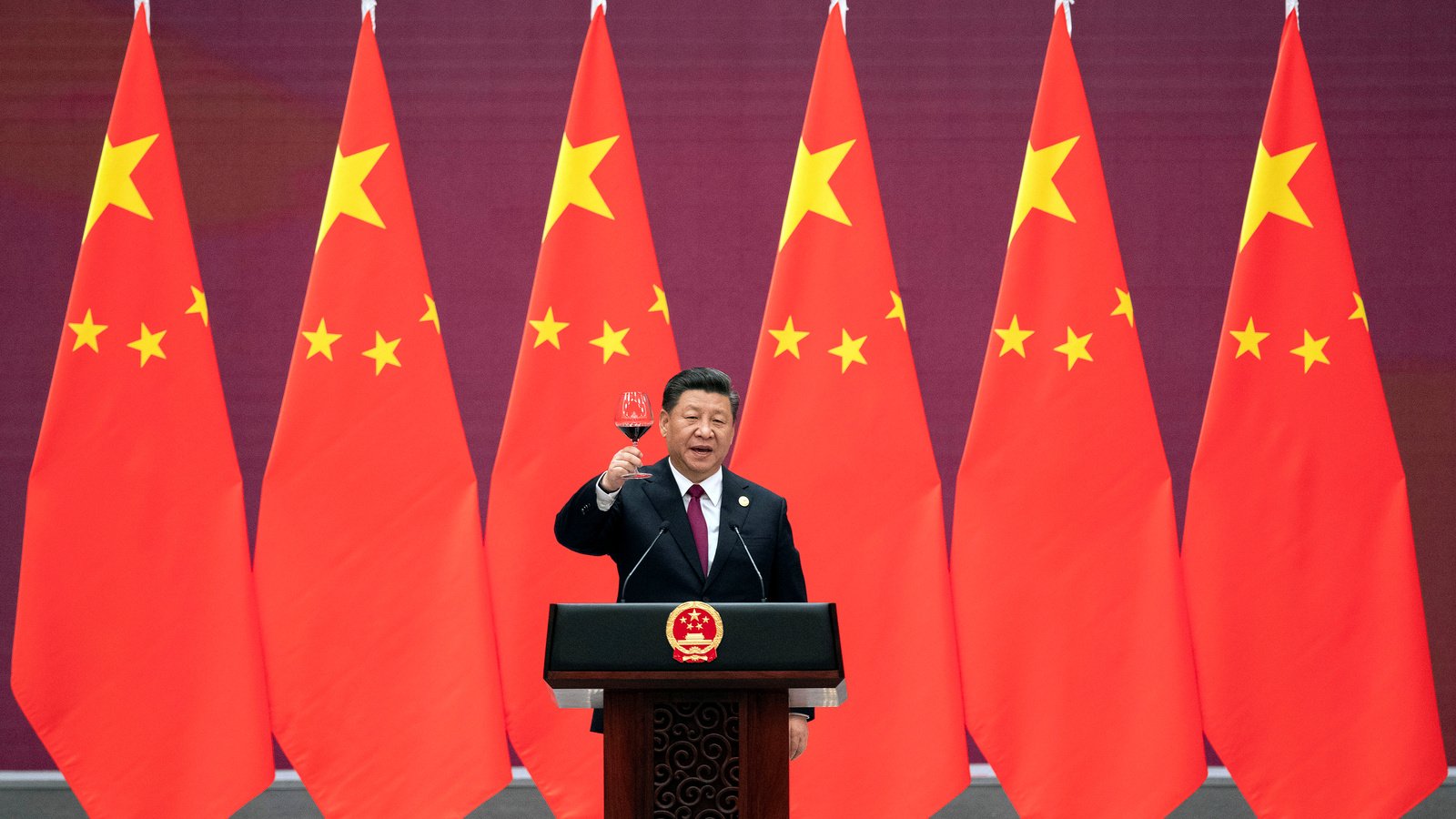CHINA
China’s ‘Bismarck’ moment is finally afoot
Ambitious social security and health care reforms aim to coax the masses into saving less and consuming more
By WILLIAM PESEK
FEBRUARY 11, 2023
Print
People crowd a street in Zhengzhou, Central China’s Henan Province. Photo: CFP
In its latest assessment of China’s economy, the International Monetary Fund channeled Otto von Bismarck in ways global investors would be wise to consider.
No, the IMF didn’t mention the 19th century German chancellor. But the social safety net model Bismarck championed for Europe’s biggest economy was written between the lines in bold font.
Among the top reforms the IMF recommends is for Chinese President Xi Jinping to strengthen the social safety net to counter the ginormous pile of household savings that anxious citizens have amassed.
That, argues IMF economist Thomas Helbling, would spur China’s 1.4 billion people to increase consumption and, in turn, stabilize a shaky property market.
According to People’s Bank of China data, we’re talking a record 17.84 trillion yuan (US$2.6 trillion). Given the scale of China’s gray economy, perhaps the real figure is even larger than the annual gross domestic product of France, which is roughly $2.8 trillion.
“An ambitious but feasible set of reforms can improve these prospects, importantly in a way that is inclusive by raising the role of household consumption in demand,” Helbling says.
“Reforms such as gradually lifting the retirement age to increase labor supply, strengthening unemployment and health insurance benefits, and reforming state-owned enterprises to close their productivity gap with private firms would significantly boost growth in coming years.”
The good news is that Xi seems well ahead of the IMF here. Indications are that his incoming economic reform team is working up an ambitious Bismarckian social security and health care system to get the Chinese masses to part with their savings and consume.
The team, presumably headed by Xi’s likely new premier Li Qiang, will have hit the ground running come March. The savings figure increased by 8 trillion yuan in 2022. What’s more, in November and December alone household deposits surged by 2.95 trillion yuan and 2.19 trillion yuan respectively.
Xi Jinping and his new de facto deputy Li Qiang in a file photo. Image: NTV / Screengrab
So China’s excessive savings challenge reached a fever pitch of sorts in recent months. The dynamic means that even as Chinese consumers engage in a collective burst of post-Covid-lockdown “revenge” shopping, households remain predisposed to continue hoarding cash.
“We think excess savings may not be released completely and very fast in 2023,” says economist Tao Wang at UBS.
Wang expects more “cautious” consumption thanks to significant strains in consumer confidence. That throws some cold water on hopes for a consumption-led recovery.
“With employment and household income still in need of recovery, consumer confidence may not recover completely but instead remain cautious,” Wang says. She adds that “some households may need to continue saving more for longer to restore their balance sheets that were damaged by the economic weakness and property downturn previously.”
Fitch Ratings is more optimistic. China, says Fitch analyst Brian Coulton, will expand by 5% in 2023 amid “evidence that consumption and activity are recovering faster than initially anticipated” after Beijing’s U-turn on “zero-Covid” restrictions.
Coulton points to China’s latest Purchasing Managers’ Index tracking manufacturing and services, which rose to 50.1 in January from a previous reading of 47, denoting expansion. Fitch believes, too, that the post-reopening surge in Covid infections “appears to be subsiding,” paving the way to recovery.
“The swift rebound from the Covid shockwave means that activity in the first half of 2023 will be stronger than we had forecast,” Coulton notes.
He notes too that “stabilizing the recovery will remain the key focus in the near term, but do not anticipate aggressive macro-policy easing,” referring to the upcoming National People’s Congress planned for March.
UBS, meanwhile, thinks China’s household consumption growth will rise only about 7.8% in inflation-adjusted terms in 2023. A big improvement, but not enough to propel GDP back to pre-pandemic levels.
Economist Carlos Casanova at Union Bancaire Privée notes that China’s gross domestic savings as a percentage of GDP are among the highest in the world, at 45.7% in 2021, compared with 17.4% in the US. This figure doesn’t even include the 2022 saving surge.
“Many households might therefore choose to hang onto excess savings to prepare for a rainy day,” Casanova says.
China’s ‘zero-Covid’ policy raised unemployment. Image: Screengrab / HBO
At the same time, he adds, “China’s labor market remains under pressure.” The surveyed unemployment rate was above target in 2022, reaching 5.6% on average versus 5.1% in 2019, Casanova says. Youth unemployment – ages 16-24 – was 17.6%, significantly higher than pre-Covid levels of 11.9%.
The good news, Casanova explains, is that “the consumption-led recovery should not result in excessive inflationary pressures.” He expects consumer prices will reach 3.0% in 2023, within the People Bank of China’s tolerance level.
It’s worth noting, too, that Xi’s government has options to inspire households to part with their savings.
“Economic policy would turn more supportive in 2023,” notes economist Larry Hu at Macquarie Bank. He expects credit growth of 11% to 12% in 2023 versus 9.6% in 2022. “Fiscal policy could also turn more expansionary with a record quota for local government special bonds,” he says.
But building a stable and trusted safety net would pay far bigger dividends.
Xi’s Bismarckian pivot is a major shift in government policy. To this day, Germany still operates health and welfare systems in ways devised in the 1880s. And not just Germany, but the UK, too.
As far back as 1981, German historian Wolfgang Mommsen posited that “entrepreneurs in both countries had shown considerable interest in a public social policy of the type implemented by Bismarck. They assumed that this would be the best way of solving the existing social problems without either interfering unduly with the free market system, weakening their competitive positions in the international arena, or imposing the resultant financial burdens exclusively on industry.”
Boston University economist Laurence Kotlikoff posits that the key is crafting a “modern version of Social Security that Bismarck would surely support.” His preference: a “fully funded, transparent, efficient, fair, and progressive” system that “features personal accounts that are collectively invested by the government at zero cost to workers.”
Philosophically, such a system needs “to be fundamentally reformed without undermining its legitimate mission – forcing people to save and insure and providing forms of social insurance that the private market would either not provide or provide poorly.” The point, too, he says is to build a social safety net that is not “incomprehensible, inefficient, inequitable, and, most important, insolvent.”
Easier said than done, of course. In general, says IMF economist Helbling, the “prioritization of spending on households over investment would also deliver larger stabilization benefits. For example, means-tested transfers to households would boost aggregate demand 50% more than an equivalent amount of public investment. To ensure consistency across policies, fiscal policy should be undertaken within a medium-term fiscal framework.”
In China’s case, changing the collective consumer mindset is a major challenge, says economist Zhang Jun at Fudan University.
A night market in Qingdao in Shandong province during China’s Golden Week holiday. Photo: Xinhua
“Not all of the excess savings reflect suppressed consumer spending,” Zhang says. “A very large proportion of the increase in deposits reflects what households choose to save as a precaution.
“Chinese households save mainly in the form of housing and financial investment, and last year they delayed home purchases and pulled out of the stock market and other underperforming financial assets in favor of keeping their money in bank deposits.”
Economist Nicholas Lardy at the Peterson Institute for International Economics notes that “one of the weakest elements of China’s social safety net is its unemployment insurance system. Its coverage is limited, its benefits are modest and only a tiny share of the unemployed receive benefits.”
In recent years, only firms employing 200 million workers, less than half of the urban labor force, participate in the system, Lardy says. Coverage of China’s migrant workers is still limited. Also, he adds, “limited participation of small private firms and individual businesses in urban areas is probably the primary cause for the small coverage of urban employment.”
“Without strengthened cash transfers to the unemployed, China’s recovery will be weak,” Lardy concludes.
Bold government action is needed. The results of the PBOC’s “Questionnaire Survey Report on Urban Depositors” flagged a continued high propensity for households to save. Less than 23% of households said they’re willing to “consume more.” More than 58% plan to save more.
On the bright side, signals are that Xi’s incoming economic team will accelerate the efforts to build a vibrant and expansive social safety net to improve access to medical care, unemployment benefits and credible paths to globally competitive retirement and pension plans. And to proceed in ways of which even Bismarck might approve.
Follow William Pesek on Twitter at @WilliamPesek
TAGGED:Block 1ChinaChina ConsumptionChina EconomyChina Gray EconomyChina ReopeningChina Savings RateChina Social Safety NetIMFLi QiangXi Jinping






























